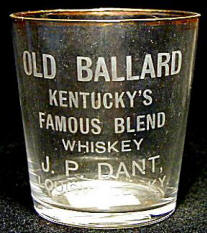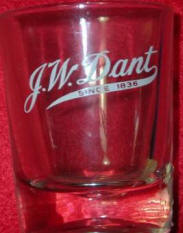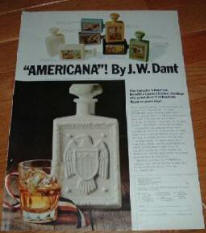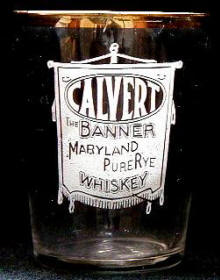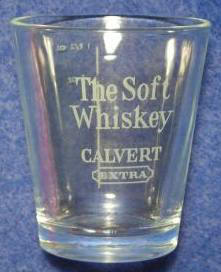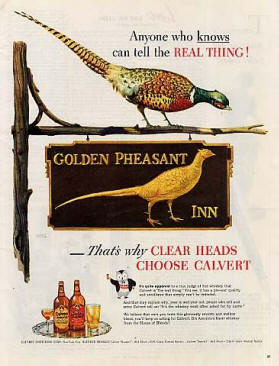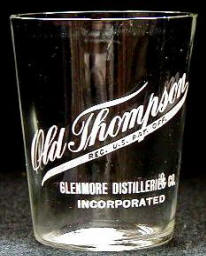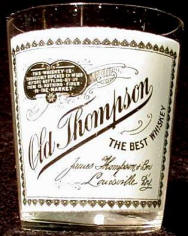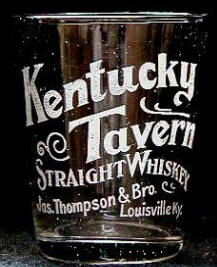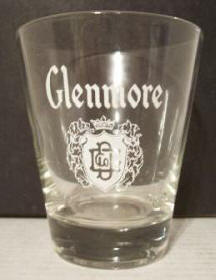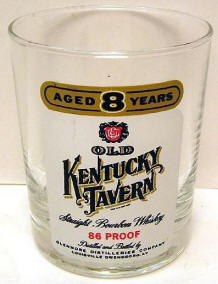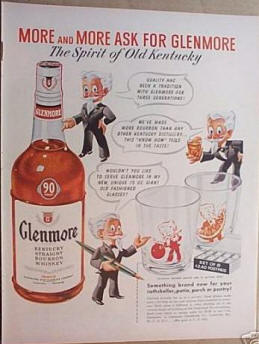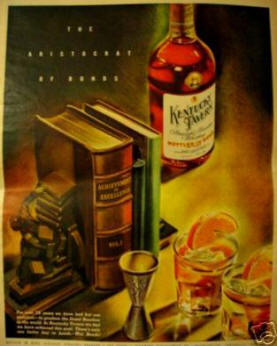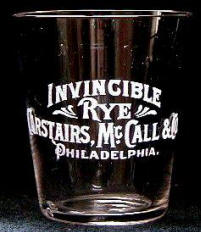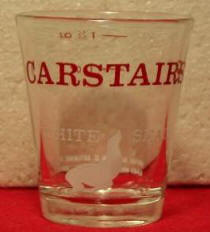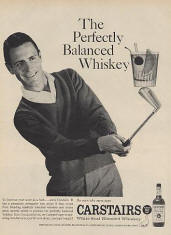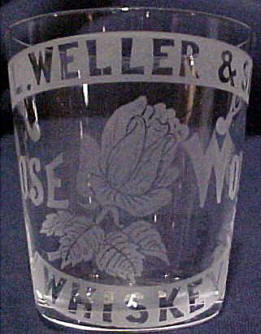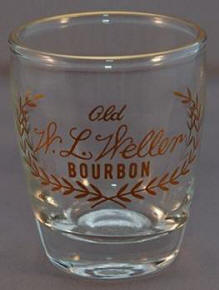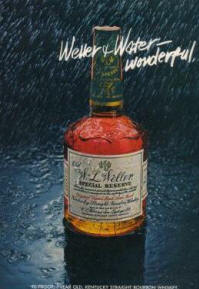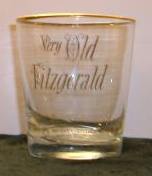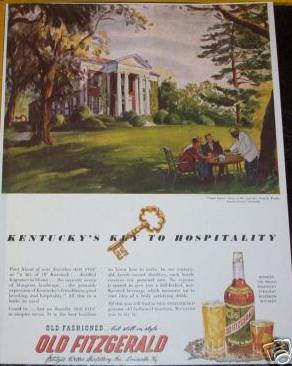|
Vol. 4, No. 6, Thursday April 3, 2008
|
|||||||||||||||||||||||||||||||
| by dick bales | |||||||||||||||||||||||||||||||
Joseph Washington Dant ran a small still in Kentucky in as early as 1836. He had seven sons, one of whom was named Jacob Bernard. J. B. Dant built the Cold Spring Distillery at Gethsemane, Kentucky in 1865 and contracted to sell his whiskey through Taylor & Williams, a Louisville wholesale liquor firm. He later took a position with and ultimately assumed control of Taylor & Williams. Dant is credited with introducing the Yellowstone brand later acquired by the Glenmore Distillery (see below). Dant brands include J.W. Dant and Old Ballard.
Shown here are a pre-pro Old Ballard glass, a modern J. W. Dant glass, and a J.W. Dant magazine advertisement, circa 1970.
James Thompson, an Irish immigrant, founded Glenmore Distillery in 1871, naming it after the castle in Ireland that was near his home. Glenmore’s main whiskey was Kentucky Tavern. In 1944 the firm purchased the Yellowstone brand from the Taylor & Williams Distillery of Louisville.
Robin
notes in his database that the origins of the Carstairs Company are
confusing because the Carstairs family was a large one, and everyone
seemed to be in the liquor business. James Carstairs, Jr. was the
original member of this company. Records show that in 1860 he was in
partnership with Joseph F. Tobias and George W. Wood.
In 1849 William
Larue Weller began a wholesale liquor business as W. L. Weller & Sons.
After the Civil War, two salesmen, Julian P. Van Winkle and Alex T.
Farnsley, joined the firm, and they purchased the business when Mr.
Weller died. The company’s main brands included Old W. L. Weller.
Messrs. Van Winkle and Farnsley purchased whiskey on the open market and
later contracted for large lots from distillers, one of which was
Stitzel Bros. in Louisville.
|
|||||||||||||||||||||||||||||||
|
If you would like to comment on "The Common Stuff", please post it but you can also contact Dick Bales directly at BalesD@CTT.com |
|||||||||||||||||||||||||||||||
|
Copyright © 2008 pre-pro.com. All rights reserved. |
|||||||||||||||||||||||||||||||
